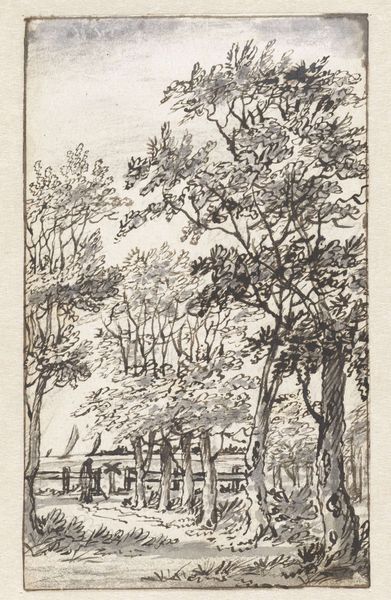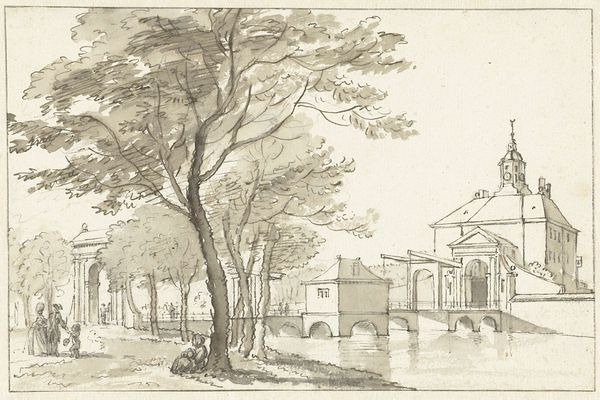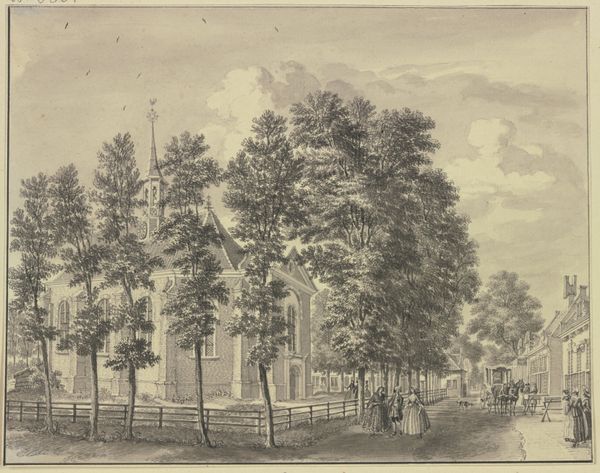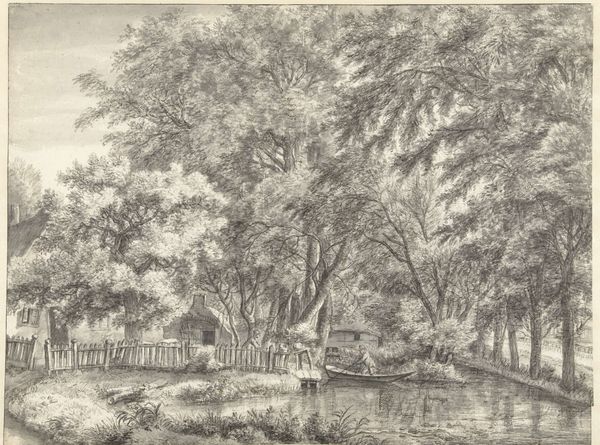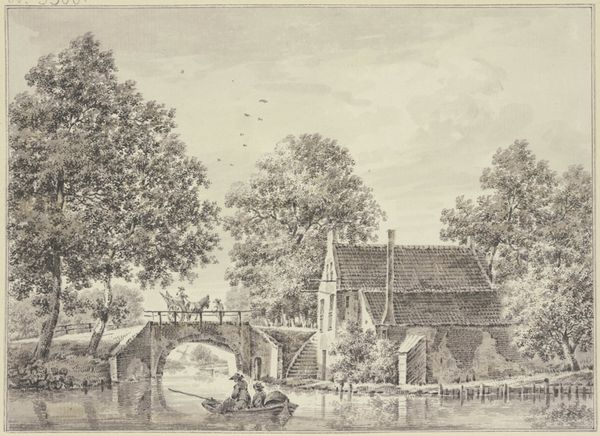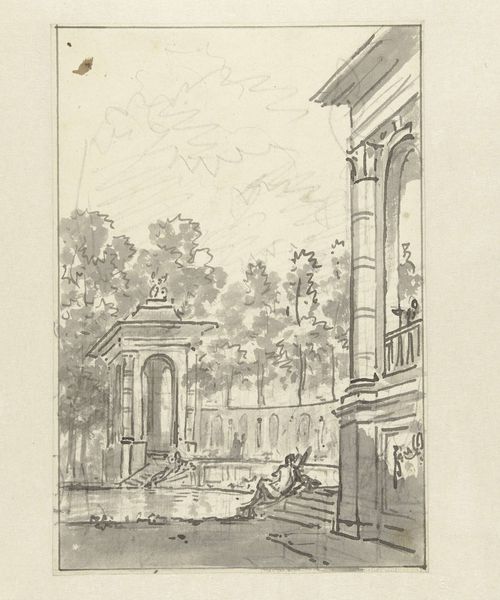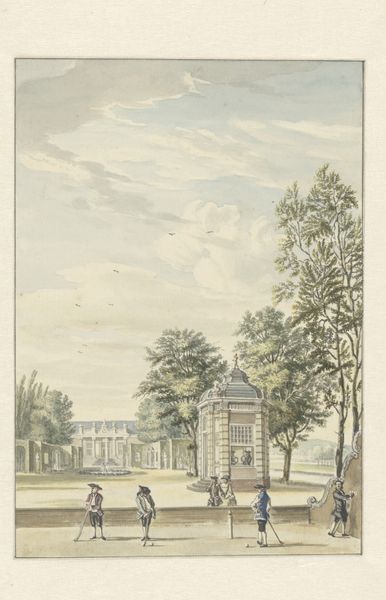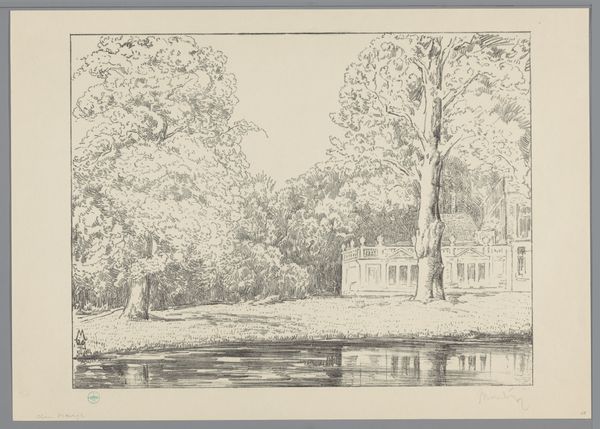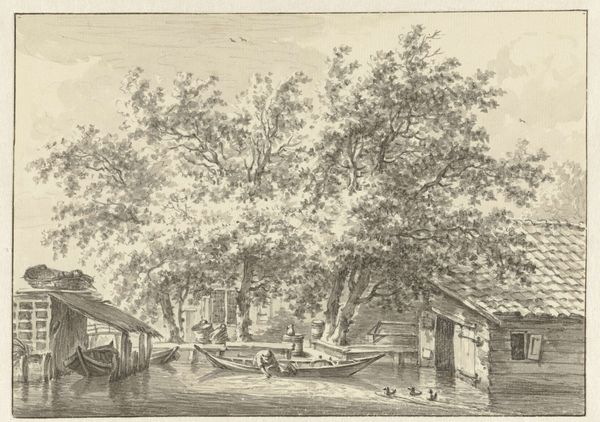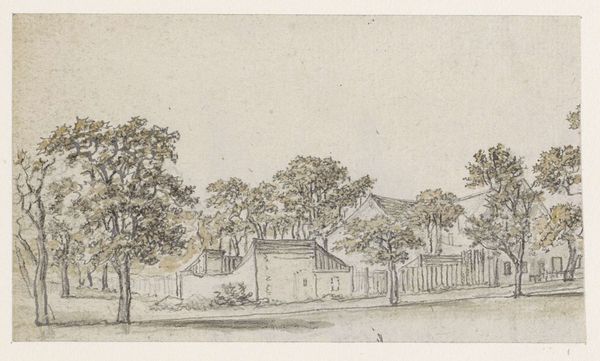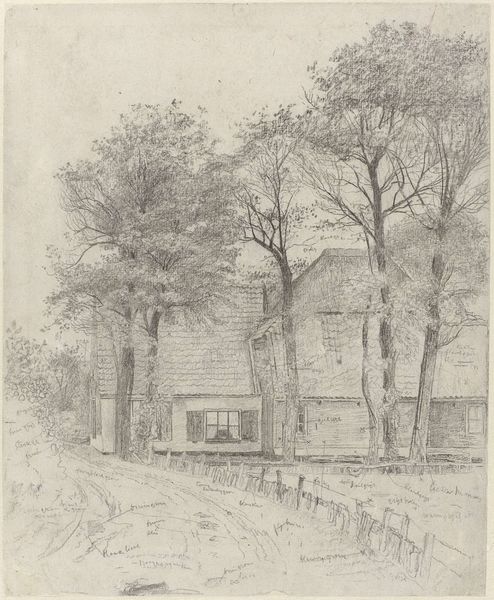
Trekschuit (Tug-Boat) alongside the Artist’s Country Estate ‘Hoogevecht’ c. 1682 - 1699
0:00
0:00
drawing, watercolor, pencil, architecture
#
drawing
#
dutch-golden-age
#
pencil sketch
#
landscape
#
etching
#
watercolor
#
pencil
#
architecture drawing
#
watercolor
#
architecture
Dimensions: height 132 mm, width 237 mm
Copyright: Rijks Museum: Open Domain
Curator: A placid calm permeates this landscape, almost melancholic in its gentle tonality. Editor: Indeed. We are looking at "Trekschuit (Tug-Boat) alongside the Artist’s Country Estate ‘Hoogevecht’," attributed to Abraham Rutgers, likely created between 1682 and 1699. It's rendered in pencil and watercolor, offering a glimpse into the Dutch Golden Age. Curator: The composition is wonderfully balanced. The architecture and boat at the margins frame the image, leading your eye inward. The delicate layering of watercolor creates such a beautiful reflected effect in the water. The texture is surprisingly rich given the subdued palette. Editor: What strikes me is the subtle narrative it conveys. These trekschuiten, or tugboats, weren't just a charming sight; they represented a highly organized public transport system in the Netherlands during that era. Canals were like the highways of the day. Curator: A symbol of efficient transportation meets a private retreat. Note the architecture’s placement almost exactly on the midline, creating a somewhat rigid effect compared to the surrounding botanical variation. Editor: This suggests an interesting dynamic between public life and private ownership. The Hoogevecht estate, seen through the boat's journey, embodies a retreat from the bustle, while still benefiting from its accessibility. The waterways also gave free citizens the opportunity to avoid the expensive road tolls levied at the time by nobility. Curator: The almost naive perspective and scale remind us this is likely a study. I want to understand how Rutgers balances architectural precision with a sense of lived experience through color and texture. Editor: Absolutely. Rutgers, like many artists of his time, played a vital role in visually documenting and, in a sense, promoting Dutch advancements. His choice to depict his estate alongside a crucial element of public infrastructure also speaks to the evolving relationship between individual prosperity and collective progress. The symbolism reflects a moment when commercial success and personal life were aligning in unprecedented ways. Curator: I'm still drawn to the subtle shifts in tone that model forms and reflections across the water. It evokes the feeling of time slowing down on a summer afternoon, where these flat reflections are common. Editor: Agreed. And viewed through a historical lens, it illustrates the material conditions that allowed artists like Rutgers to flourish. A true visual essay on prosperity, transportation and the comforts of country life.
Comments
No comments
Be the first to comment and join the conversation on the ultimate creative platform.
